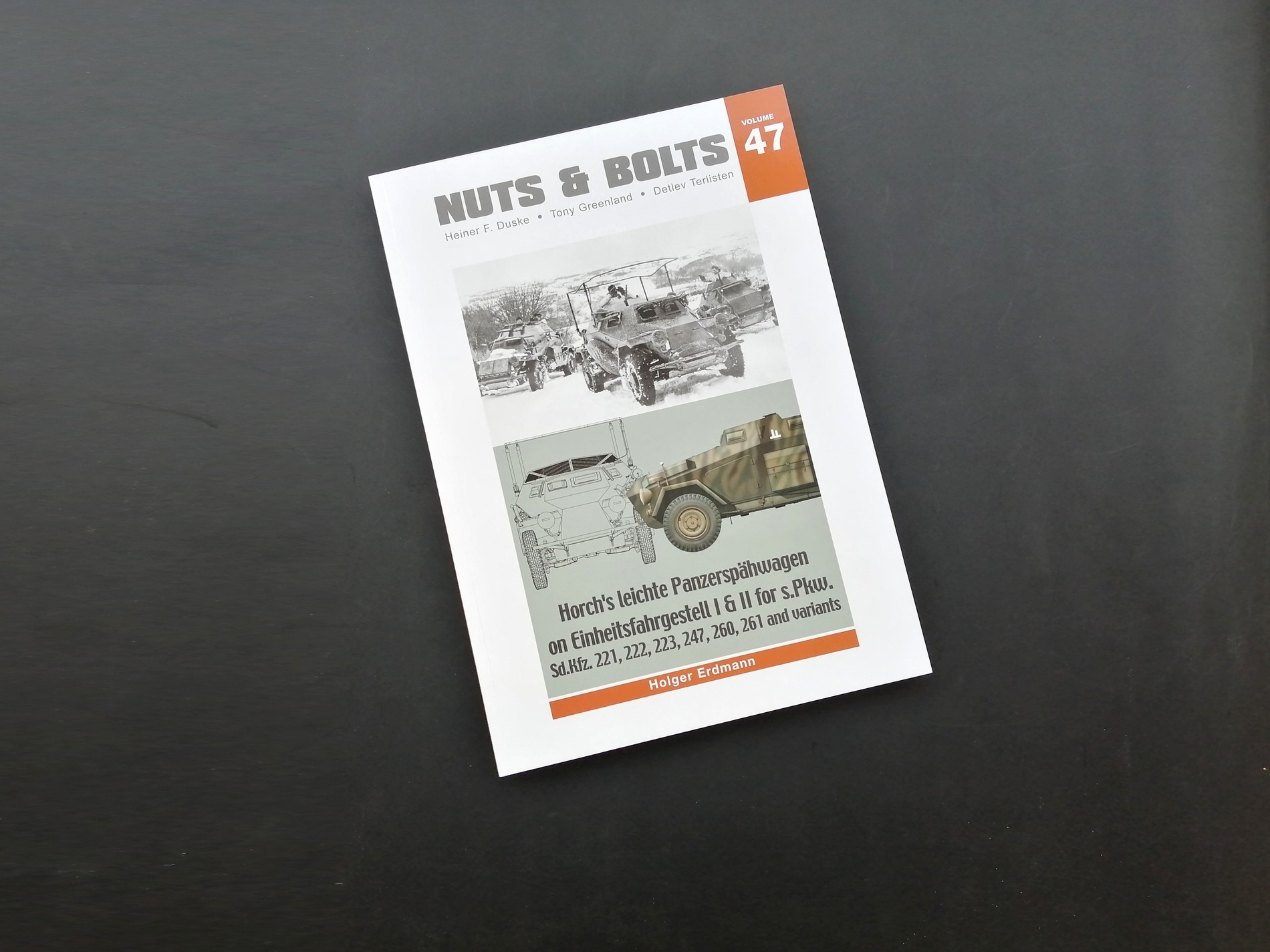One of the first Nuts & Bolts volumes, number 04, was devoted to German Sd.Kfz. 222 and 223 Armoured cars. As it was long out of print, the Publishers decided to update it, including also the rest of the series that were missing (i.e. the 221, 247, 260 and 261), thus covering the whole family of 4-wheel armoured cars. The bigger 6-wheel and 8-wheel vehicles are subject of other Nuts & Bolts volumes already published.
The book has been written by Holger Erdmann, it has 234 pages in A4 portrait format and is printed on a good quality gloss paper. All text is bilingual, in English and German.
The main sections of the book are the usual on the series, with an ample historical introduction, wartime photos, colour profiles, scale drawings and detailed photos of preserved vehicles. There is however a small difference this time, which is the reduced section of built models, the rest being moved to their website to make room for more content on the book.
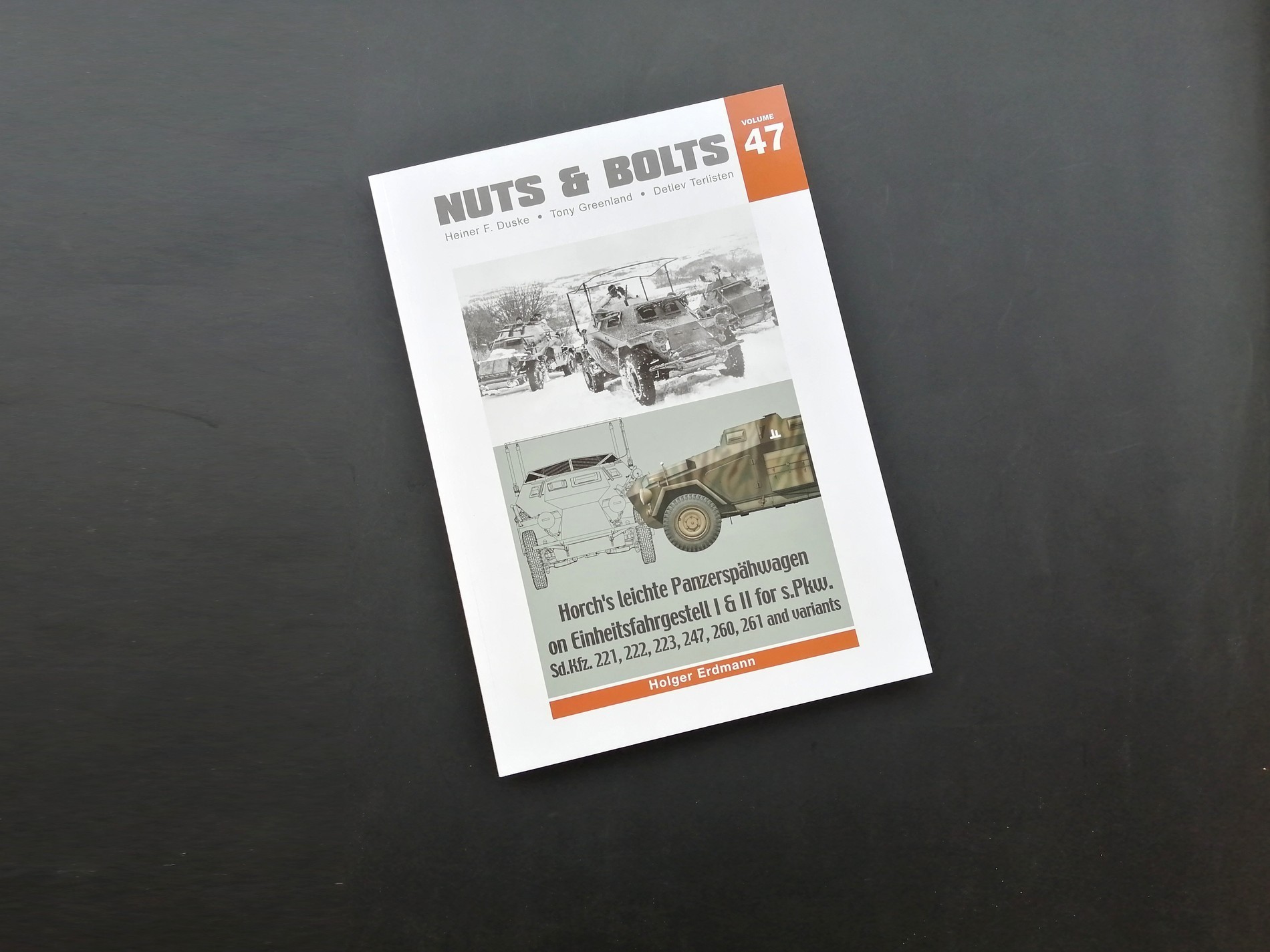
The first main section is mostly text and takes almost one third of the book. It covers the development of the vehicles and the different chassis and a (very) technical description of them.
On the following pages there is also a description of the armoured superstructure of all variants, plus the different weapons and radio equipment carried. As usual the text is supported by several photos and charts.
The production figures are broken down by manufacturer, month/year and type.

The organization is also well covered, with the structure of reconnaissance, signal and cavalry troops plus Waffen SS and Luftwaffe units. The graphical representation is always useful to see which vehicles operated together.
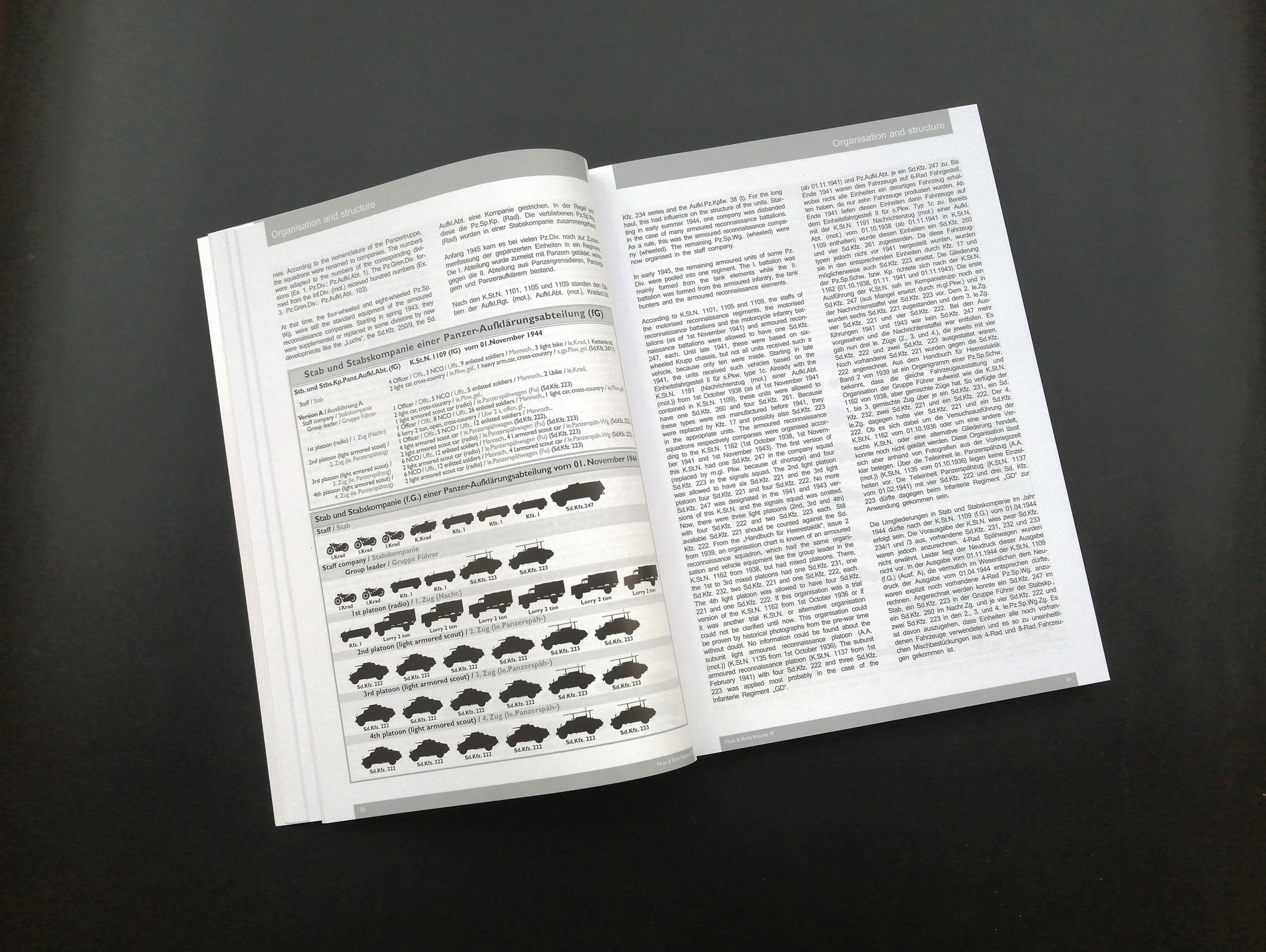
Then there is a long chapter with Unit History of a good number of reconnaissance battalions (Pz. Aufkl Abt.) and Armoured Scout Companies (Pz.Sp.Kp). Unfortunately, it only describes the different places where each unit operated, with hardly any mention to vehicle types used, markings, colours or combat reports.
The camouflage, markings and License Plates sections, which come next, contain some good generic information with reference to regulations but again little to none specific information on the subject vehicles.
The limited service in foreign armies is briefly covered in two paragraphs.
Finally, there is a list of kits and aftermarket products, with indication of brand, scale and reference.
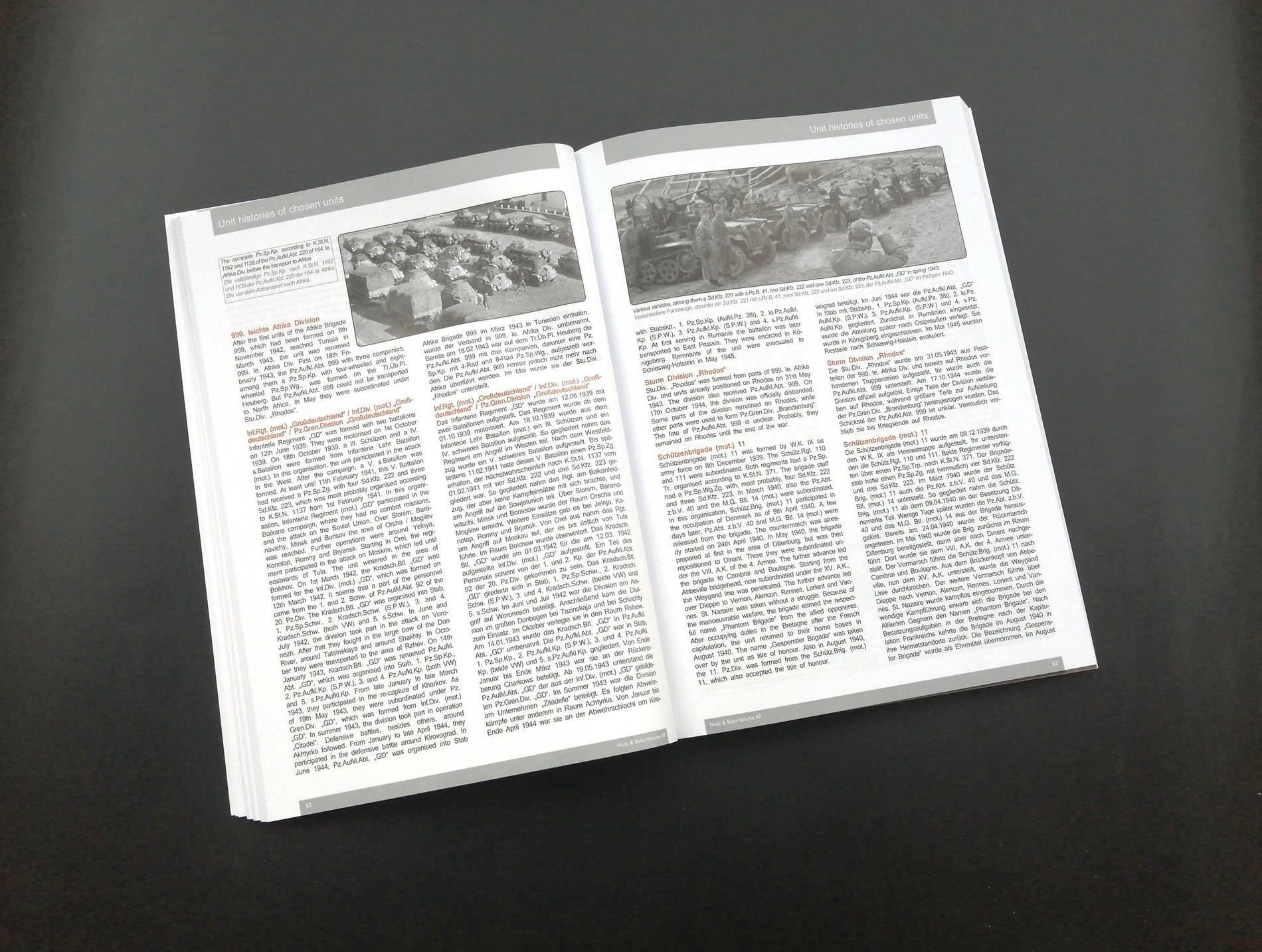
Next big section are the contemporary photos, 76 pages of original B&W photos, sorted by vehicle and series, and showing in detail markings, interior, hull and in action scenes. It opens with an impressive collection of images of the naked chassis and engine and including the names of many parts.
Photos are large, usually 2 or 3 per page, clear and adequately captioned.
There are also several interesting images of field modified vehicles.
It is a specially enjoyable section thanks to the large number of photos and their quality.
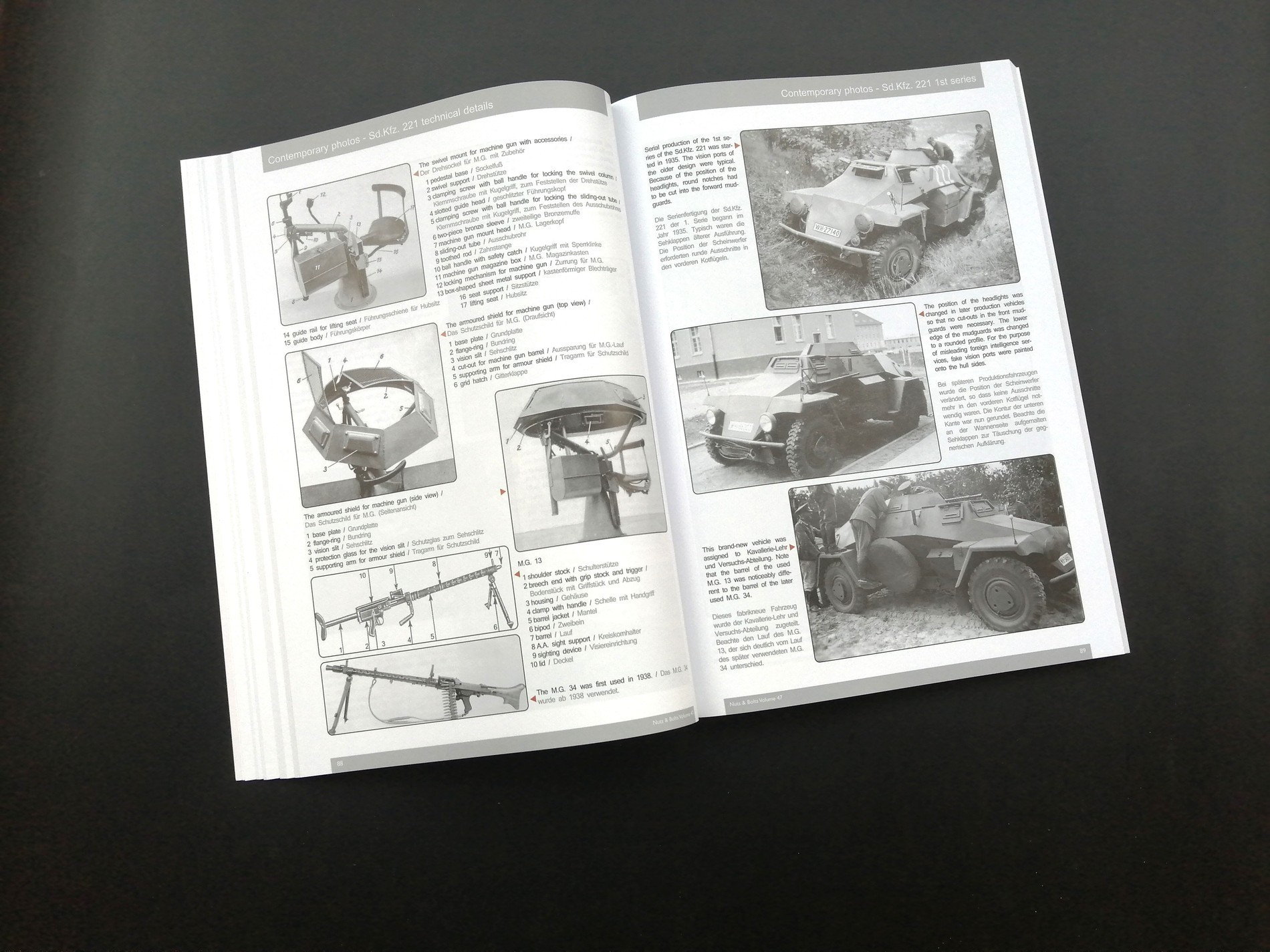
All these photos allow to detail vehicles, guide weathering, get inspiration for schemes or dioramas and more.
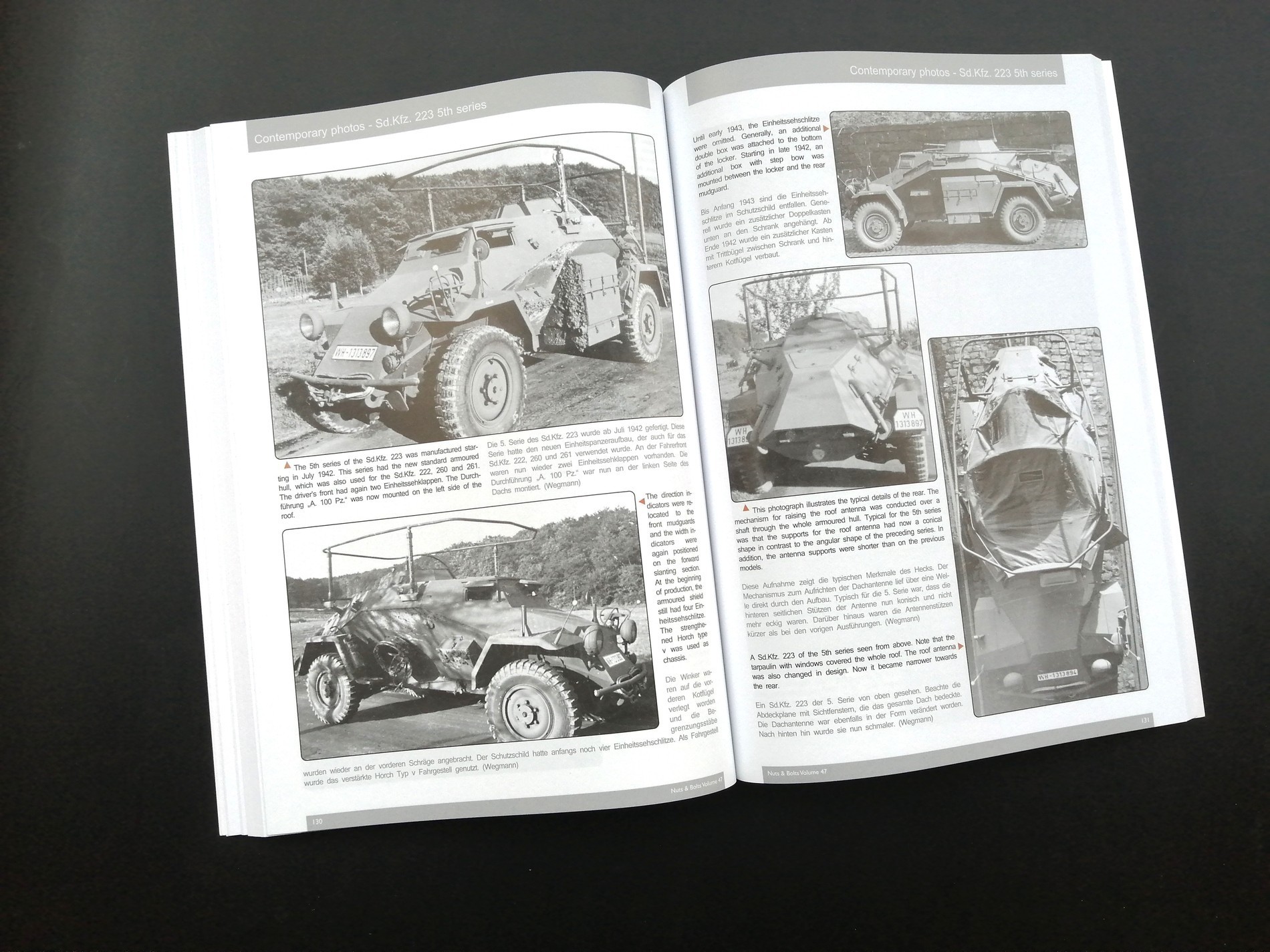
The scale drawings section, by Lieven deConinck, has 26 pages of 1/35 plans of all variantes and different series. For each vehicle there are at least the five traditional views (top, front, rear, left, right). Some of them have additional isometric views.
All these drawings are very helpful to quickly and visually identify the exterior differences between vehicles and series, and also for converting a kit from one series to another.
Apart from the whole vehicles, there are several drawings of the chassis, also at 1/35 scale.
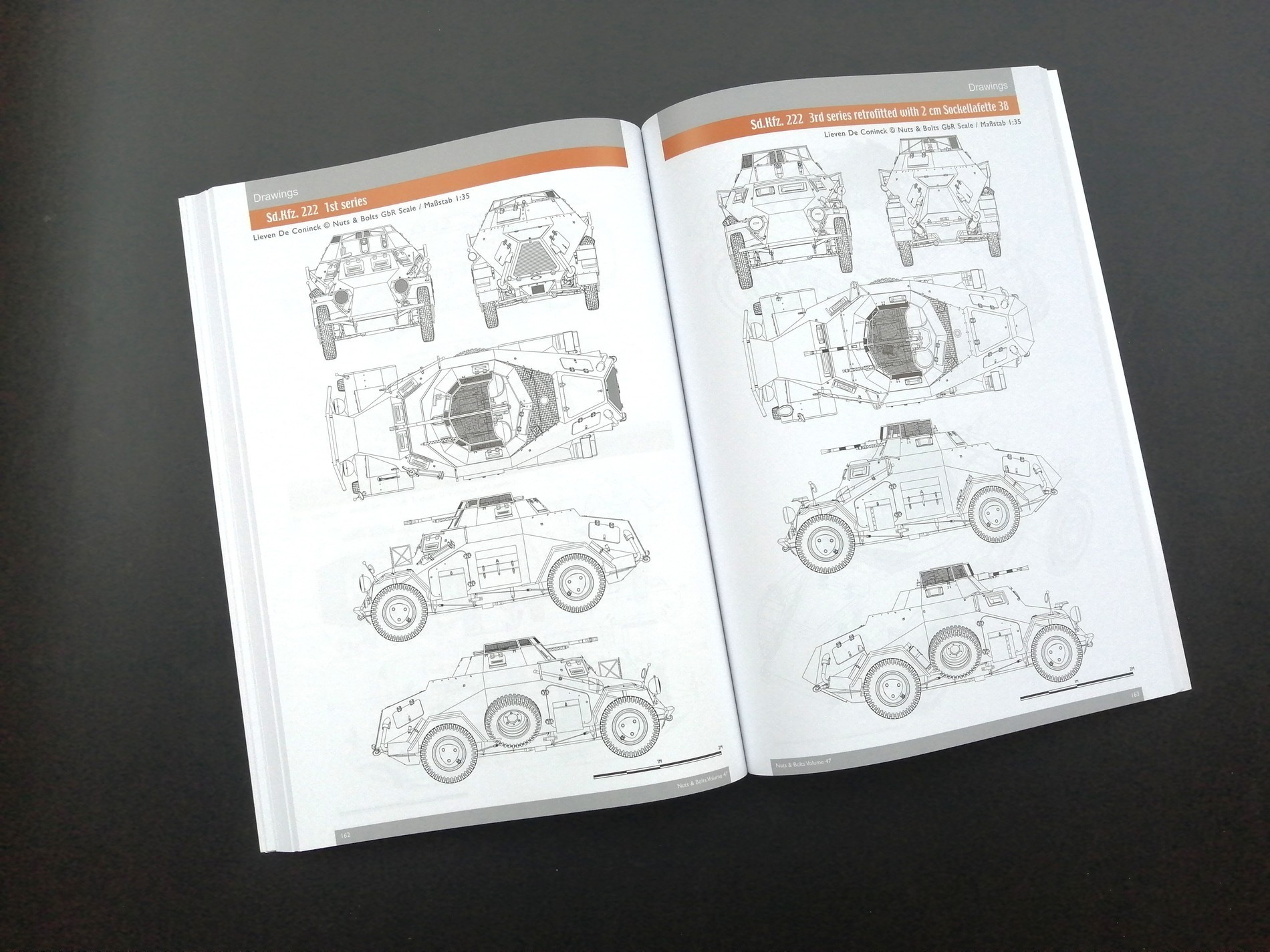
The colour profiles have been done by Laurent Lecocq. Given the variety of vehicles included and the camouflages they carried, these 16 examples cover a wide range of possibilities with Buntfarbenanstrich, Dunkelgrau, whitewash, Africa and late war tri color schemes.
All the profiles show a thumbnail of the photo in which they are based, and the page were this photo can be found at full size. The drawings show weathered vehicles with dust and/or mud, which is a nice touch.
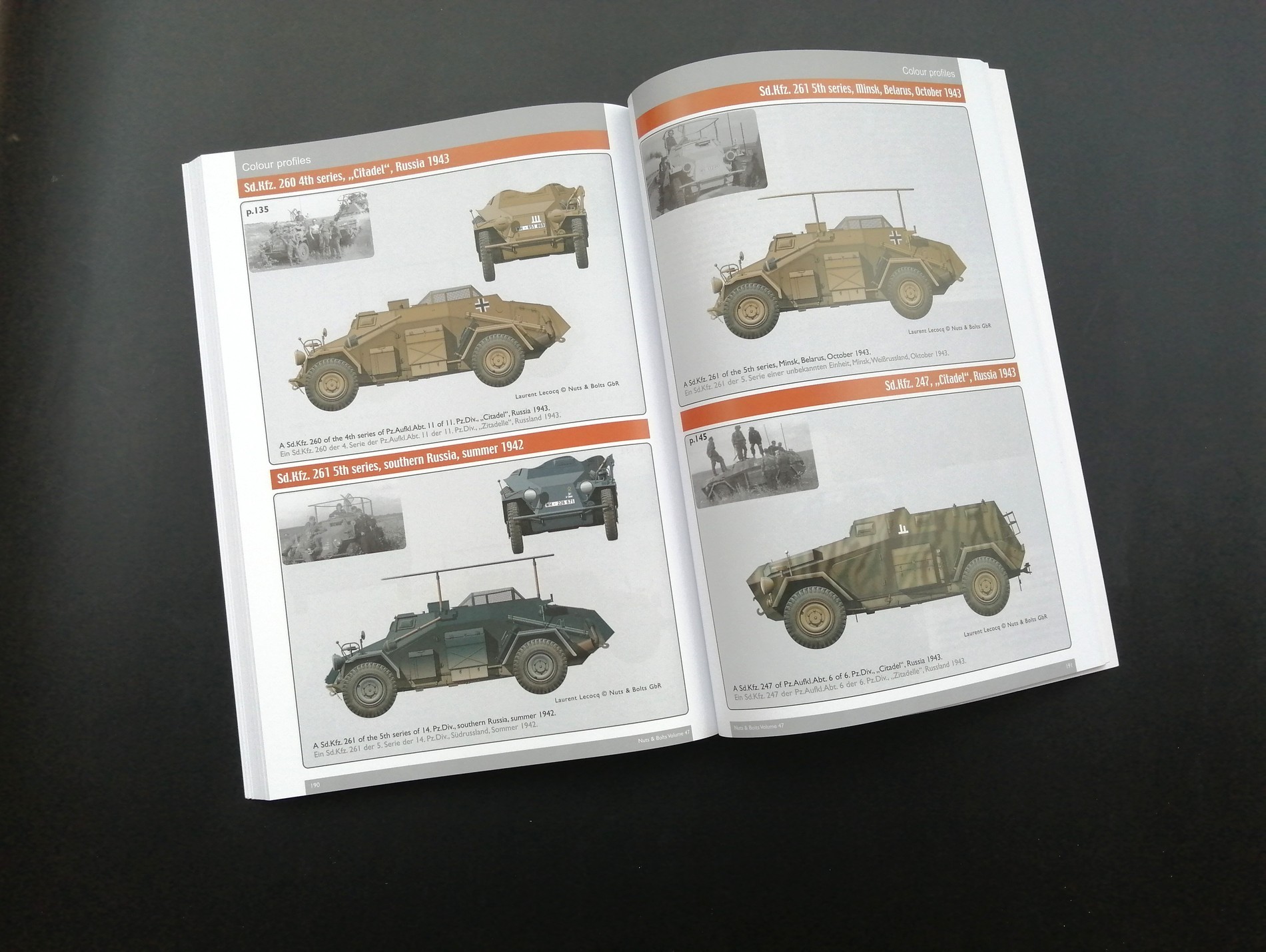
The last 42 pages of the book are full of images of preserved vehicles. Like the wartime photos, they are all captioned with pertinent information.
Photos are clear and show details that would be hard to see otherwise. There is a very complete exterior/interior walkaround, plus close up photos of the suspension, engine, mounting of the 2cm gun, radios carried and more.
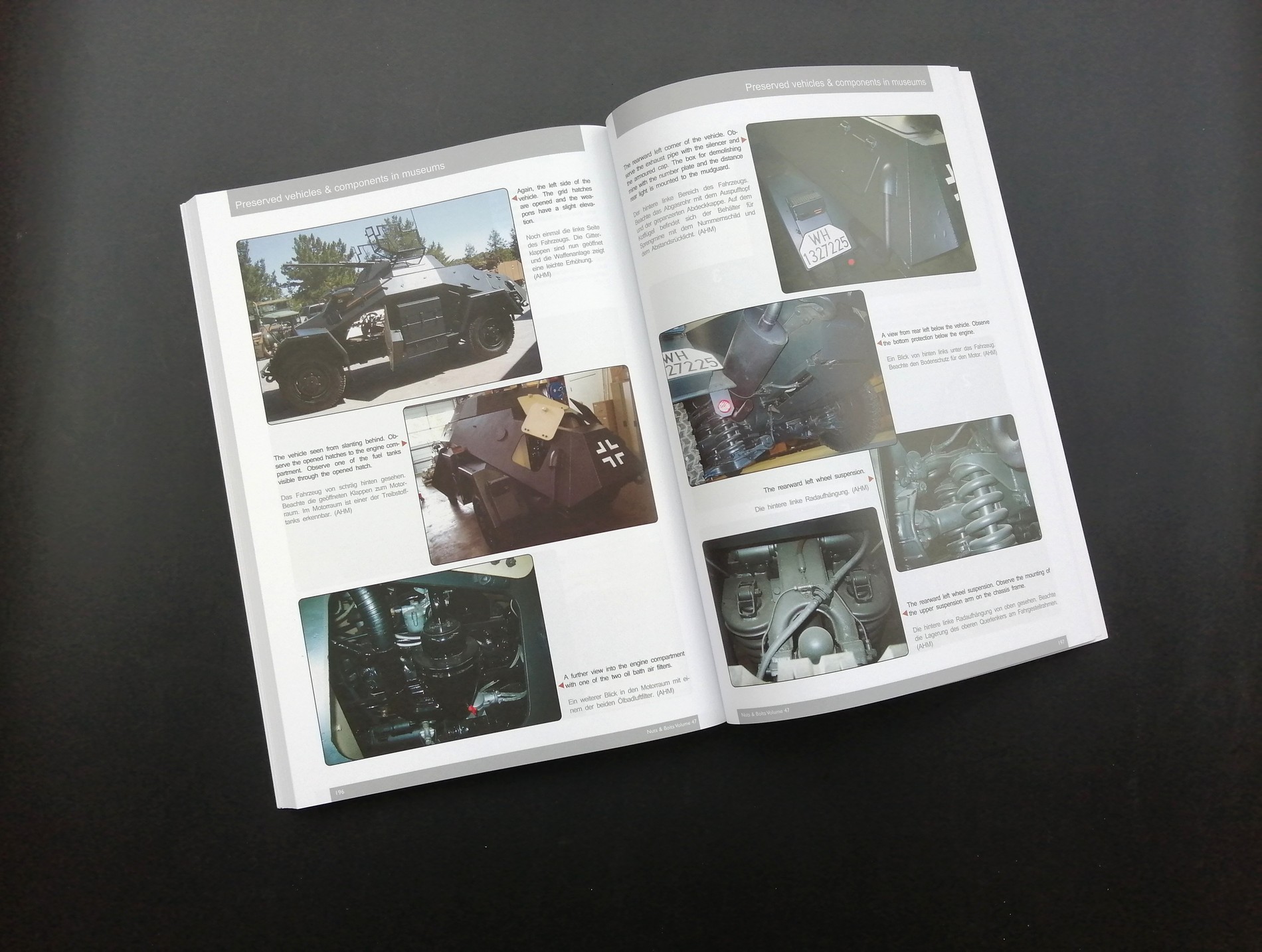
The very last page of the book, in fact the inner back cover, has three photos of models by Vinnie Branigan and Roland Greth. In this volume, the amount of information is so large that the publishers decided to include as much as possible, at the expense of the models. However, these photos and their comments that did not fit, are available as a large PDF file that can be downloaded from their website.
Conclusion
This volume of Nuts & Bolts has a lot of useful information on the German 4-wheels armoured cars. It has an excellent coverage of the exterior and interior (which is important for almost-open top vehicles) both with period photos and preserved vehicles.
The wartime photos provide plenty of inspiration and reference for vehicles and series, the drawings allow to detail or convert kits to different series and the beautiful color profiles are an excellent source of ideas for camo.
In summary. it is a great reference for anyone building or just interested in these armoured cars.











